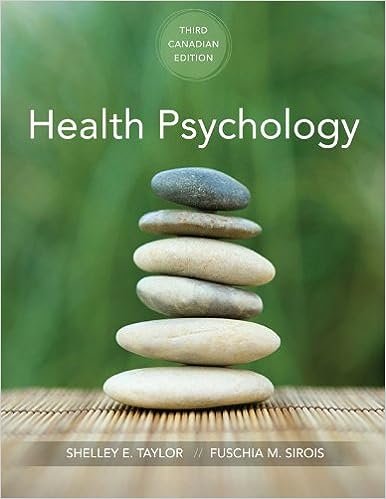Test Bank For Abnormal Psychology An Integrative Approach 6th Edition International Edition by David Barlow
CHAPTER 4: STUDYING PSYCHOPATHOLOGY
MULTIPLE CHOICE
- Your friend has trouble making commitments in relationships. You believe that this is because her parents had a bitter divorce when she was young. Your belief that a child who lives through a bitter parental divorce will have trouble making commitments in relationships as an adult would be considered a(n) _________.
| a. | hypothesis |
| b. | independent variable |
| c. | empirical conclusion |
| d. | applied theory |
ANS: A DIF: Easy OBJ: 1; APALO: 2.1
MSC: TYPE: Applied
- Of the following, this hypothesis would NOT be appropriate given the concept of testability:
| a. | behavior is influenced by the rewards that follow the behavior. |
| b. | children who view aggression are more likely to act in an aggressive manner. |
| c. | invisible forces influence our behavior every day. |
| d. | personality traits can be influenced by genetics. |
ANS: C DIF: Easy OBJ: 1; APALO: 2.1
MSC: TYPE: Applied
- A hypothesis is defined as a(n) _________.
| a. | theory |
| b. | empirical conclusion |
| c. | research study |
| d. | educated guess |
ANS: D DIF: Easy OBJ: 1; APALO: 2.1
MSC: TYPE: Factual
- Dr. Smith uses a sample of participants in his memory study. Any conclusions that can be drawn from the results may be applied to the general population if there is a high degree of
| a. | internal reliability. |
| b. | external reliability. |
| c. | internal validity. |
| d. | external validity. |
ANS: C DIF: Moderate OBJ: 1; APALO: 2.1
MSC: TYPE: Conceptual
- The dependent variable in a research study is the variable that
| a. | is expected to influence or change the variable being studied. |
| b. | is the empirical result of the study. |
| c. | is expected to be changed or influenced in the study. |
| d. | forms the most important component of the hypothesis. |
ANS: C DIF: Easy OBJ: 1; APALO: 2.1
MSC: TYPE: Factual
- The independent variable in a research study is the variable that
| a. | is expected to be changed or influenced in the study. |
| b. | is expected to influence or change the dependent variable. |
| c. | is the empirical result of the study. |
| d. | forms the most important component of the hypothesis. |
ANS: C DIF: Easy OBJ: 1; APALO: 2.1
MSC: TYPE: Factual
- A researcher is testing the effects of sunlight on depression. The dependent variable is_________ and the independent variable is _________________
| a. | sunlight; depression |
| b. | depression; sunlight |
| c. | sunlight; mood |
| d. | depression; mood |
ANS: B DIF: Easy OBJ: 1; APALO: 2.1
MSC: TYPE: Applied
- In regard to research design, all of the following statements are true EXCEPT that
| a. | independent variables are hypothesized to have an impact on dependent variables. |
| b. | independent variables are generally manipulated by the researcher. |
| c. | dependent variables are hypothesized to have an impact on independent variables. |
| d. | dependent variables are generally measured by the researcher. |
ANS: C DIF: Moderate OBJ: 1; APALO: 2.1
KEY: WWW MSC: TYPE: Conceptual
- Any factor in a research study that makes the results uninterpretable is called a(n) ________.
| a. | independent variable |
| b. | confound |
| c. | dependent variable |
| d. | confluence |
ANS: B DIF: Easy OBJ: 1; APALO: 2.1
MSC: TYPE: Factual
- While studying the impact of nutrition on intelligence, a researcher has one group of rats on a vitamin-rich diet and the other group eating Big Macs. While observing the rats run a complicated maze, the researcher notes that the vitamin-enhanced rats’ maze is more brightly lit than the Big Mac rats’ maze. The difference in lighting in this study is a(n) _________.
| a. | confound |
| b. | independent variable |
| c. | dependent variable |
| d. | hypothesis |
ANS: A DIF: Difficult OBJ: 1; APALO: 2.1
MSC: TYPE: Applied












Reviews
There are no reviews yet.